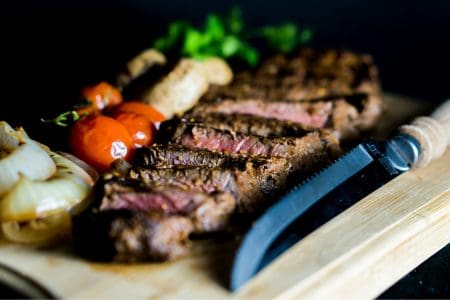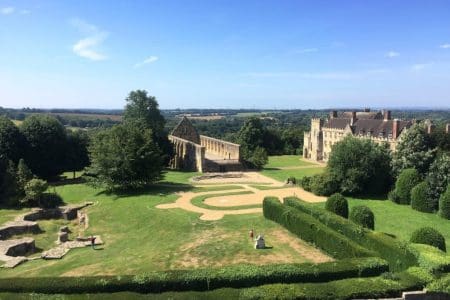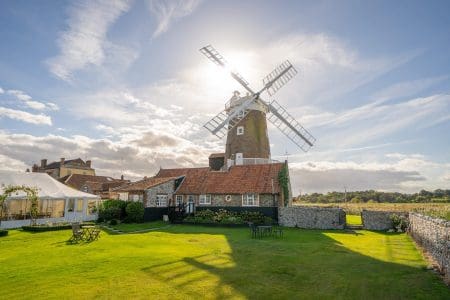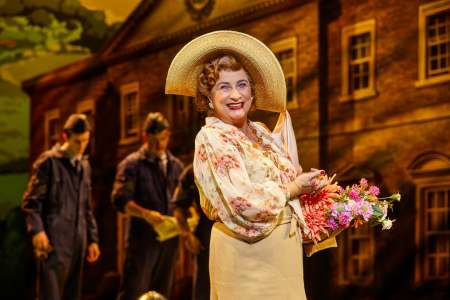There are hotels you go to for their destination and hotels that become destinations in themselves, Congham Hall Norfolk is both.
Set in glorious countryside just outside of the Sandringham Estate in Norfolk, Congham Hall is a Georgian manor house that has been turned into a luxury hotel and spa.
Our drive could not have been more beautiful. Late spring was willingly yielding to early summer and the rhododendron were out in full bloom as we drove along the roads along which Prince Philip had his narrow brush with the law in his latter years.
Congham Hall Norfolk History
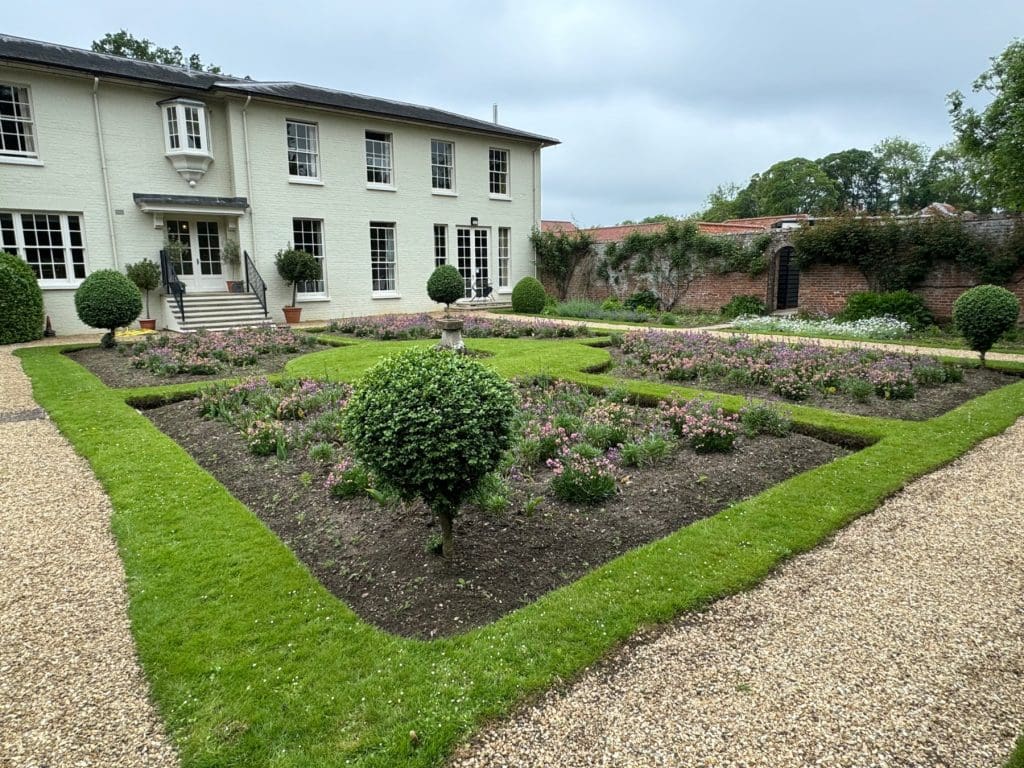
It is believed that Congham Hall was built around 1780 by the Elsden’s a wealthy merchant family from neighbouring Kings Lynn. Unfortunately, there are no records to prove this, but it is known that James Elsden Everard bought the property in 1834, and it remained in the family until 1925 when it was sold to Colonel Hancock.
He developed the extensive gardens and planted the orchard that still remains to this day. He also built the adjoining tennis court and cricket pavilion, although the swimming pool was a 1970s addition by Lady Meriel Howarth.
In 1982 it was turned into a hotel by Christine and Trevor Forecast, and subsequently bought in 2012 by Nicholas Dickinson who has transformed the property adding five Orchard Cabins and Samphire Kitchen restaurant in June 2021. In total the hotel has 31 rooms set in 50 acres of parkland.
Congham Hall Hotel : Orchid Cabins
It is to one of the Orchard Cabins that I am escorted after our seamless check in. As a keen but extremely amateur birdwatcher my eye was immediately drawn to the pair of binoculars and bird book by the side of my super king size bed.
The cabin backs onto the orchard and has an outside terrace area – with bath – that offers great views onto the orchard and its plentiful birdlife. Beyond it is woodland where judging by my Merlin App rooks, crows, thrush and blackbirds chant away.
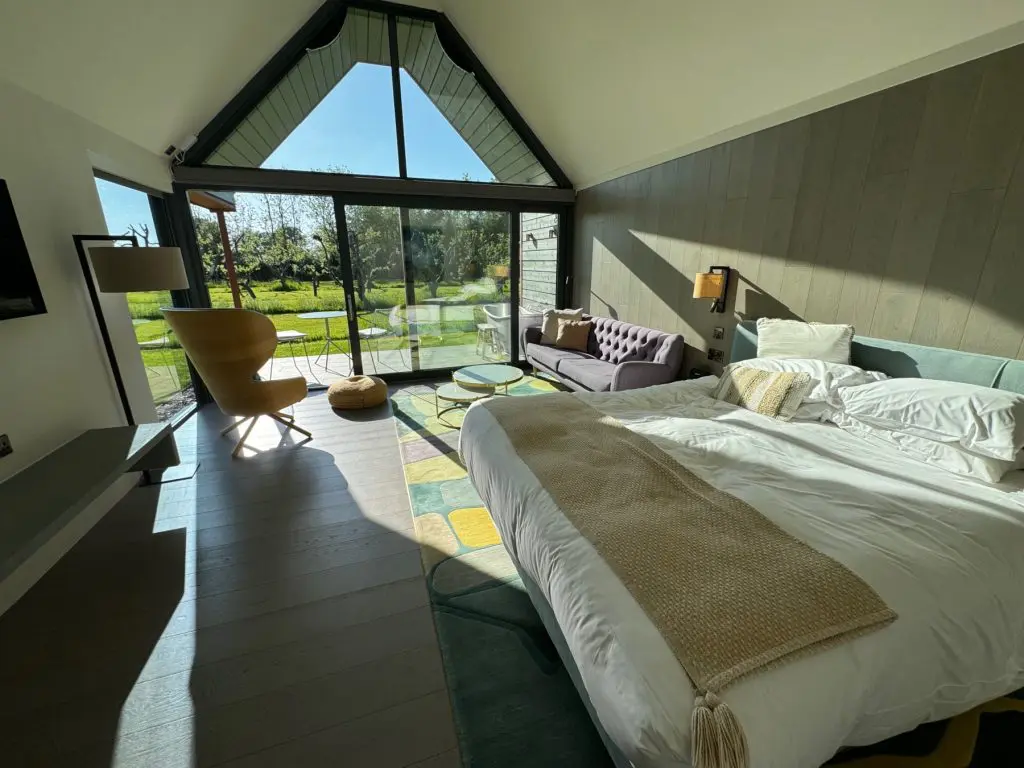
My room is tastefully decorated and well-appointed with Nespresso coffee machine, ample desk and choice of sofa and reclining chair in which to relax. My bathroom has both free-standing bath and shower, as well as excellent elemental herbology products.
What I really love about the cabin is the vast windows, that afford great views of the orchard. This really is a great place just to hideaway.
My companion stayed in a garden room which was spacious and had a small terrace area where she could look out onto the herb garden. There is also a series of rooms in the house itself, for those who find the cabins a bit too modern for their tastes.
I could have stayed for ages staring out of my vast windows but I have important business to do.
Congham Hall Spa
Congham is not just a former Georgian manor house, it also has a very modern Secret Garden Spa attached to it.
Inside the spa is a sauna, bio-sauna and steam room as well as a 12-metre swimming pool and foot baths. One intriguing feature is the experience showers, which allow you to enter the Amazon should you wish. I’m not sure I have ever experienced such a musical shower previously. The spa also has a range of treatments and massages.
However, on a wonderful sunny afternoon it seems a shame to be indoors, so after a quick session in sauna and steam and an even quicker dip, I head to the outdoor deck to soak up some Vitamin D, interspersed with occasional trips to the hot tub.
The deck has similar views as those from my cabin. So, I spend most of the afternoon drifting away to birdsong, while watching the cows pop by to say hello in the neighbouring field. It is the quintessential English pastoral setting.
Dining at the Samphire Kitchen Congham Hall
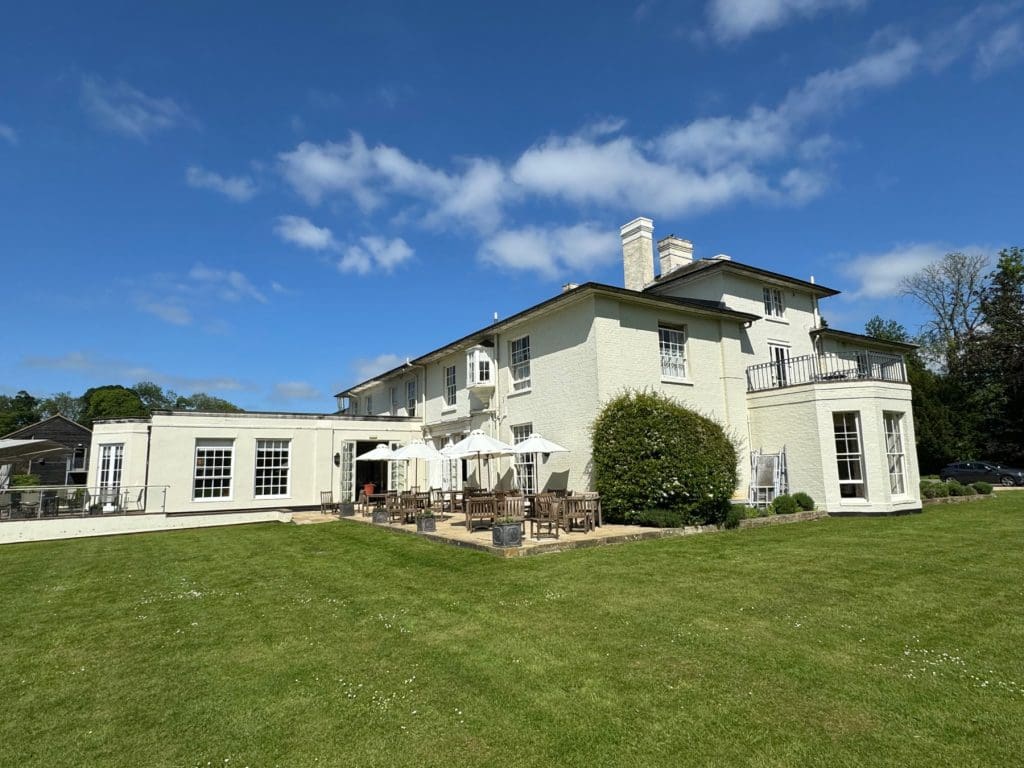
In the evening, we head across to the main house for a drink on the terrace overlooking the large croquet lawn, before dining at the 2 AA rosettes Samphire Kitchen.
My companion opts for a local gin while I sup a pint of Norfolk’s finest Woodforde Wherry. Executive chef James O’Connor has created an interesting menu incorporating wherever possible locally-sourced ingredients, many of which come from Congham’s own herb and vegetable garden. His aim is to source 80 percent of food from within a 20-mile radius, where quality allows.
On my travels I am familiar with dining at many restaurants in hotels up and down the country, the Samphire Kitchen is one of the finer ones. Elegant and contemporary it is in keeping with the decor of the main building which has lots of contemporary art pieces. It is also extremely light, unusual in a building of such age.
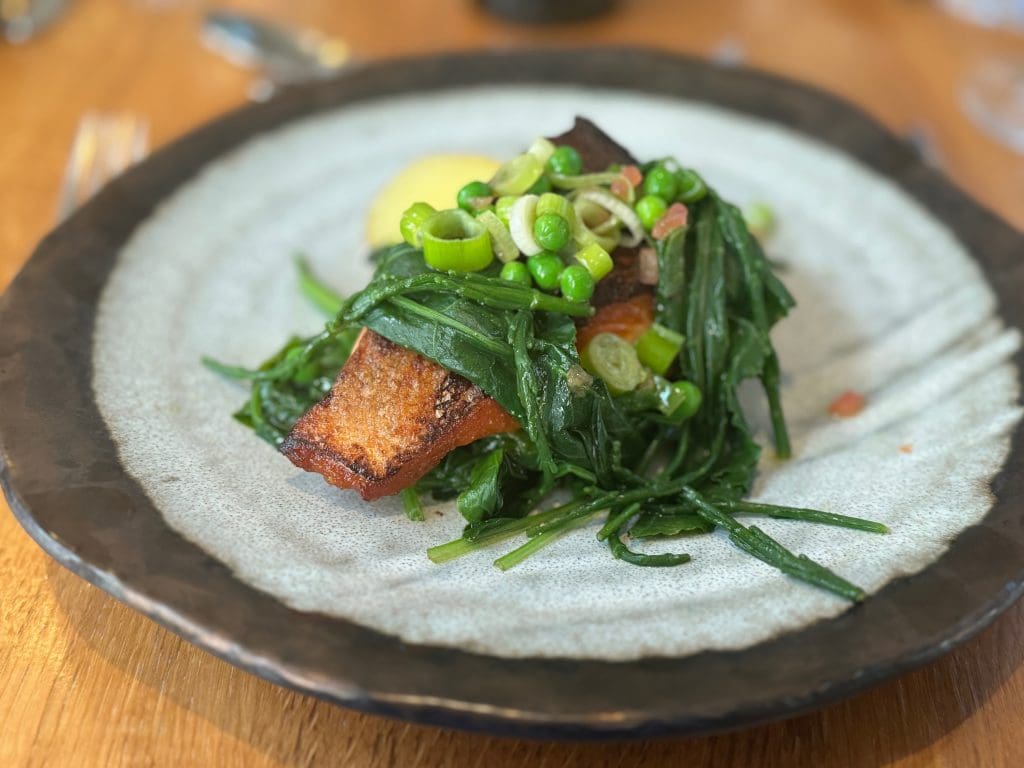
Ordering our meal on the terrace we are led to our perfect table next to the window overlooking the garden a few minutes’ later. One nice touch is that each table has a pot of herbs on it. In our case it was rosemary.
I choose a falafel and heritage tomato salad for my starter while my companion has Norfolk asparagus wrapped in ham, which she says is excellent. This we follow with a roast free-range guinea fowl served with celeriac puree and woodland mushroom on a rosti, and the catch of the day, a fillet of salmon served with sea beats, samphire and spinach in a sauce vierge. The latter is cooked to perfection, and is one of the best dishes I have tasted in a while.
I conclude with an excellent and copious selection of English cheeses including a wonderful Lincolnshire poacher and equally excellent vegetarian soft cheese, while my guest opts for the mille feuille which oozed with raspberries and Chantilly. It is a most satisfying meal.
After an excellent night’s sleep guaranteed by the luxurious linen, and dawn chorus of birdsong, we return to the restaurant for round two, as is often the case.
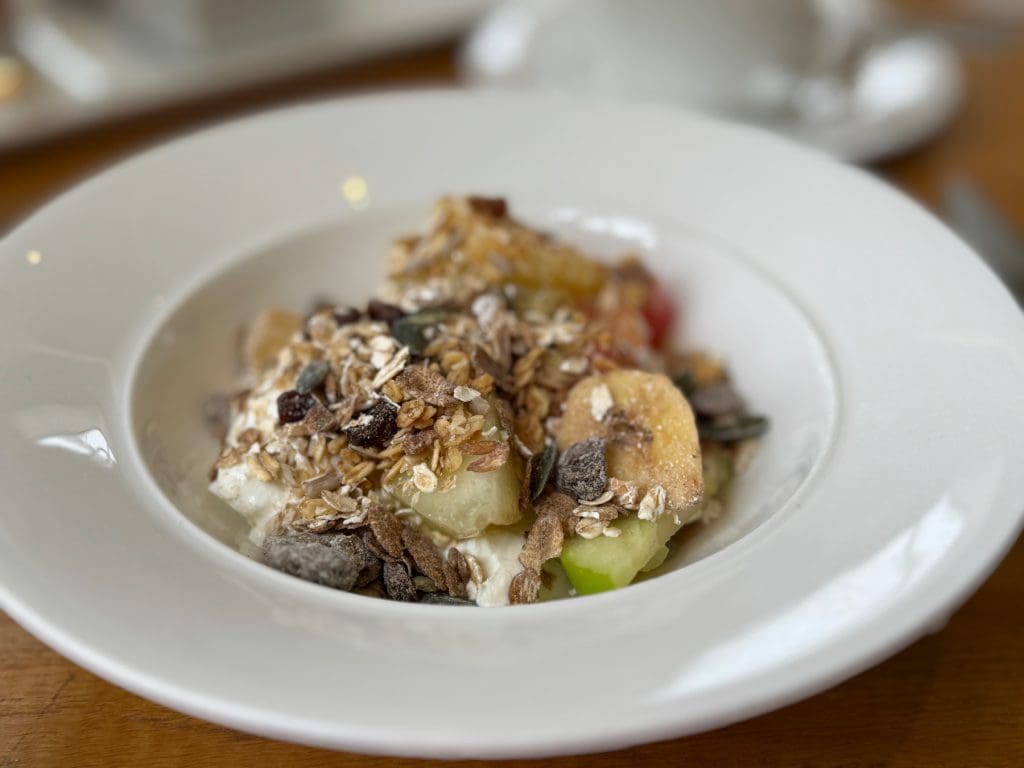
Breakfast is presented brilliantly in white porcelain with an extensive menu with no buffet in sight. I always judge breakfast on the presence of grapefruit juice and kippers. It passes both with flying colours although I opt for avocado with poached egg on sourdough, to accompany my fruit, yogurt and granola. The only regret is that after such a substantial dinner the previous evening I can not do it justice, although at least I do not order the full English like my companion, who says the black pudding is particularly excellent.
Roydon Common Nature Reserve and Castle Rising
My plan for the following morning is to go on one of the walks in the adjoining woodlands, even getting as far as securing a couple of walking routes from the staff at reception who were excellent throughout our stay. However, once breakfast is completed, I realise I have spent so much time doing nothing in particular that I do not have sufficient left for the walk.
Instead, we check out as seamlessly as we checked in the previous day and go exploring the area.
A few miles from Congham Hall, just beyond the village of Roydon, with its excellent Three Horseshoes pub where we had lunched the previous say, is Roydon Common Nature Reserve. This has been protected by the Norfolk Wildlife Trust since 1963, and has excellent and easy walking as well as free parking. Woodlarks, skylarks and hen harriers can be spotted here, and apparently the heather on the heath is beautiful at the right time of year.
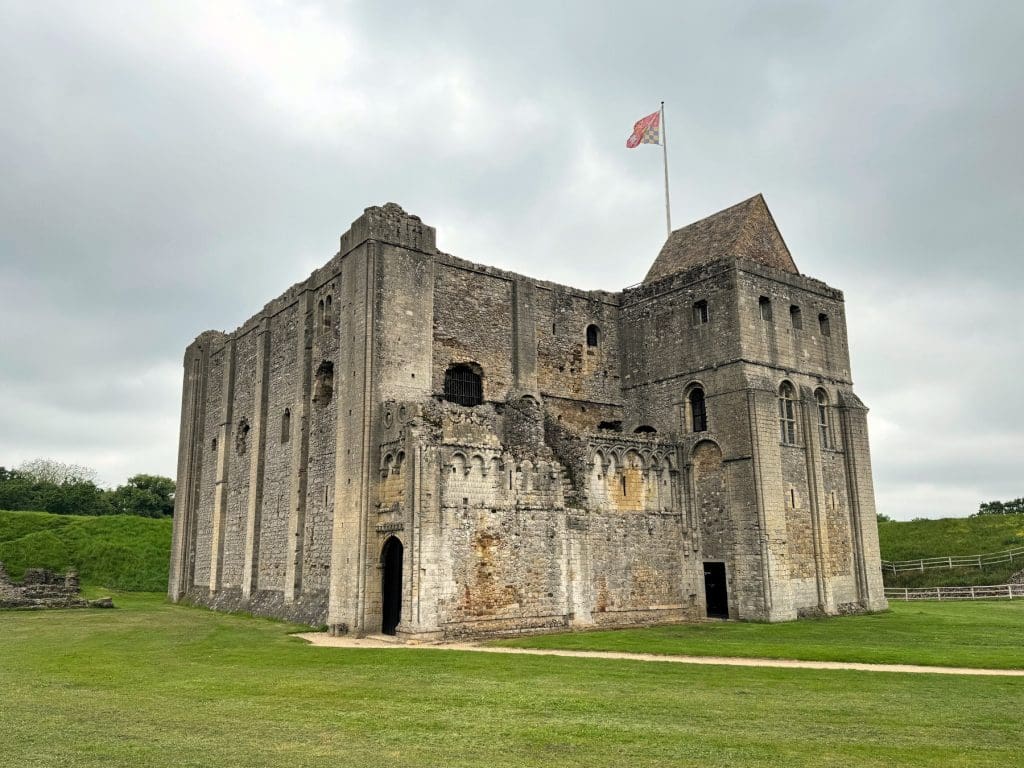
A few minutes further and you come to Castle Rising which is a beautiful village with an old church and 12th century castle and keep.
Managed by English Heritage, the keep is supposed to be one of the largest and best preserved in the UK. The castle was listed in the Domesday Book as belonging to Bishop Odo of Bayeux, brother to William the Conqueror, although the keep itself was built in the 1140s, reaching its peak in the 14th century. Castle Rising was given to the Howard family by Henry VIII.
A short visit here concludes our quick break in Norfolk, and suitably refreshed we drive back home
Congham Hall Hotel & Spa
Congham Hall, Congham, King’s Lynn, Norfolk, PE32 1AH
https://www.conghamhallhotel.co.uk/
Castle Rising
Open 10am to 4pm or 6pm depending upon season. Tickets cost £6 or free for English Heritage members.
